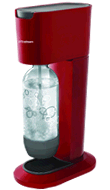 |
|
Written by ZOOZ
consulting and training | (972)-9-9585085 | info@zooz.co.il
| www.zooz.co.il
|
| Issue 66 |
Hello!
We
are pleased
to send you the new issue of LaZOOZ.
This monthly newsletter is sent as a free
service to thousands of senior executives.
It features different sections each time, and does not include advertisements.
We tried to keep it brief, assuming that your time is precious
and the work is plentiful.
Those who wish to learn more, will find links to articles and relevant information sources.
We hope that you will find the newsletter useful. We will be happy to receive any comments and suggestions.
Pleasant reading!
Ari Manor, CEO, ZOOZ
|
|
Details
An interview with a senior executive
|
Shlomo Barak, CEO of Roladin
-
Number of company
employees
:
Approx. 160, 6 of which are my direct subordinates.
- We provide: Baked goods and pastries that we produce and sell in our own chain of bakeries and cafés.
-
I have been in my
position for
: Approx. three months.
-
History:
I filled various senior positions at Osem, the most recent of which was CEO of Bonjour, and prior to that I was CEO of ‘Off Tov’ (Good Chicken) and Manager of the Private and Organized Market. I have a Bachelor’s degree in Agricultural Economics and Administration, and an Executive MBA from Bar Ilan University.
-
What I like about the
job
: I love to change and refresh things, and since I’m new to the position, I simply love everything at this stage. Specifically, in the positions I fill, I love that I can make a difference, improve and optimize processes, and plan for the long term. Furthermore, in my current position, I love the surprisingly good relationship I have with the entrepreneur and the owne
r.
-
The most difficult
part of the job
: I’m currently enjoying everything, and don’t have any difficulties yet.
-
Goals I want to
attain
: I’m interested in doubling Roladin’s business within three years, by establishing it as the leading bakery brand in Israel.
- Our vision: Roladin’s vision is to provide Israelis all over the country with fantastic baked goods at reasonable prices. How do we do it? First of all, we do not compromise on the quality of the raw materials and the product, and only at the later stages do we try to minimize costs
.
-
Original products
in the
field: I think that Roladin has done an exceptional thing with sufganiyot (donuts without holes). During the Chanukah season, people stand in line for a long time to enjoy our amazingly beautiful and delectable sufganiyot. To organize such an operation in such a short period of time, and to cause sufganiyot to be identified with the Roladin brand is an amazing thing in my opinion.
-
Sources of
innovation
: Roladin’s owners, the Hakak family, are entrepreneurs in spirit, and are constantly coming up with new ideas. Moreover, the professional staff, the chefs, the marketing department and the chain’s managers, process the ideas in a proactive and positive manner, and promote what can be operationally implemented
.
-
Recommended professional book:
I read a lot of professional literature. I
especially enjoyed the book
The Black Swan: The Impact of the Highly Improbable
by Nicholas Taleb Nassim. An amazing book by a Lebanese American mathematician, which puts everyone that thinks their talent is the exclusive reason for success, in their place
.
-
Roladin’s website:
www.
roladin.com
-
Send feedback to
Shlomo@roladin.co.il
-
Would you like to be interviewed?: contact us
|
|
|
Techno-Marketing
A guest column: Neta Weinrib – On B2B marketing of technological products
|
Strategic Sales
In the
previous column, we started discussing sales strategy. Before we continue with that discussion, I thought it would be a good idea to address the sales processes that will contradict everything I wrote and will write on the topic: strategic sales
There are two types of strategic sales:
- Sales to strategic customers, who are considered critical to the company’s success because of their size or importance in the market.
- The first sales of a new product.
The goals that I described in the
previous column, meaning maximizing revenues and profits from sales, are not relevant to strategic sales. Strategic sales, like their name implies, have strategic goals.
The goal of selling to a strategic customer is clear: To attain (or maintain) a market share and the image of a market leader, and to obstruct potential competitors.
And what are the goals of the first sales of a new product? The successful culmination of a sales process is of course one of them. Customers are important and a convenient foundation for future sales.
But the initial sales processes have a critical role in forming and shaping the company’s future marketing and sales strategy. These sales processes need to help us understand several things, such as:
- Does our product suit market needs? What do we need to change or improve in our product? What is superfluous about it?
- Is our pricing correct?
- What questions arise during the various stages of the sales process? What problems need to be solved? What difficulties do we need to overcome?
- Who in the organization are we selling the product to?
Of course, three different sales processes may yield three completely different answers to these questions. But there is a higher chance that a certain pattern will emerge from the sales processes. It is very important to use the answers to the questions in order to change or modify the product’s positioning and price, and to define the sales processes and implementation of the system.
Since the lessons learned from these processes will define how the company will operate in the future, it is important that the people responsible for these areas in the company will participate in them: marketing or product manager, system engineer or the director of R&D. These people’s familiarity with the sales process will enable them to plot the path that will ensure successful future sales.
Let me give an example:
I worked at a company that sold software that allows cellular users to surf the web faster. At the entry to market process, two important things became clear to us:
- The operators to whom we sold the product did not have the requisite knowledge to operate an internet surfing service (in fact, in order to use our product they had to become ISPs). We had the requisite knowledge and therefore, during subsequent sales processes, we took care to provide customers with information and support in planning and purchasing the supplementary equipment. Thus, we alleviated the sales process and the implementation and of course, we strengthened our relationship with the customer. We gave customers the feeling that we were supporting them throughout the entire process.
- In contrast to our basic assumption, that we are selling a product that gives subscribers a new service and therefore we must contact the operators’ marketing people, it became apparent to us that the product actually solves a problem that the engineering people faced. We changed the positioning of our product accordingly, and the marketing materials were adapted to the new target population. The fact that it was clear to us who we needed to turn to at the operator, made the penetration to market easier.
Our first sales processes were not particularly successful, or perhaps they were. Even though we did not generate significant revenues from these processes, they helped us understand what we were selling and to whom, and to define the product and the sales processes that later helped us sell systems to leading global operators, to participate in defining a new market, and to become that market’s leader.
- The column was written by:
Neta Weinrib, an expert on marketing technological products. Information about Neta appears
here.
-
More information about marketing assistance for technological products appears
here.
|
|
|
Invention
An innovation which
surprised the world market and competitors
|
A Bubbly Market
This time about an Israeli company that managed to grow surprisingly quickly.
At the beginning of 2007 Fortissimo Capital, an investment fund, acquired 40% of Soda Club for 8 million dollars and appointed Daniel Birnbaum as CEO. Mr. Birnbaum, who was then CEO of Nike in Israel, brought to Soda Club his expertise in consumer goods, which he acquired at Proctor & Gamble, at Nike, and also in introducing Pillsbury to Israel. After refreshing the managerial strata at the company, Daniel led a drastic change in the soda machines and how they were marketed.
First, the company’s positioning was redefined. The direct competitors were defined as the carbonated soft drink companies. Soda Club had to come up with some good reasons why consumers would prefer the soda machines to store-bought carbonated soft drink bottles. The challenge was to occupy a place on the kitchen counter, “the most valuable real estate there is”, according to Daniel.
In order to emerge victorious in the competition for counter space, the machine was redesigned to a sophisticated and high-tech look (similar to espresso machines), so that customers who bought it would be proud to use it and display it to guests. Super designer Karim Rashid designed a high-end line of soda machines for the company. The change was a success, and the new soda machines even won a prize for technological innovation (!) at an esteemed exhibition.

In order to win the completion against the bottled carbonated soft drinks, “green” benefits (not using disposable plastic bottles that take years to degrade and making the transition to a reusable and degradable plastic bottle) and health benefits (for which a line of special syrups were developed – natural fruit-based syrups without preservatives, diet syrups, and syrups with nutritional supplements) were touted. Moreover, the cost of using the soda machine is significantly cheaper than buying bottled carbonated beverages.
In order to grow rapidly, the company decided to penetrate new countries. The name of the brand and the company were changed from Soda Club to Soda Stream. At the beginning of 2007, the company operated in 14 countries, and it currently operates in 41 countries, expanding to the U.S., Italy, France, Spain, Britain and Canada, to name a few. Soda Stream’s penetration in these countries is 5%-15%, with Sweden being the global leader with 20% penetration (one in 5 households!).

Soda Stream machines are currently sold through approx. 40,000 electronic goods stores and high-end chains. These shops benefit from repeat visits from customers who bought the machines and return to the store to buy syrups and carbonators. The challenge is currently to preserve and expand the distribution network while maintaining the brand’s value and the loyalty of the customers (the stores) and the end customers.
Soda Stream’s success story is an excellent example of superb marketing, repositioning, and well coordinated change of the marketing mix components (product – chic design and healthy syrups;
price – expensive compared to other soda machines and cheap compared to bottled carbonated beverages;
location – penetration to numerous countries through high-end retail chains by controlling all the sources of revenue – the machines, the syrups, and the carbonators;
sales promotions – with public relations riding the trendy “green” wave).
The results, seemingly surprising, followed. Fortissimo Capital’s gamble on Soda Stream paid off. After a successful float on NASDAQ in November 2010, the shares that remained in Fortissimo’s possession are currently worth over 100 million dollars. More than a 13-fold return on the investment within 4 years. Who said that successful investments can only be made in High-Tech?
|
| |
|
|


